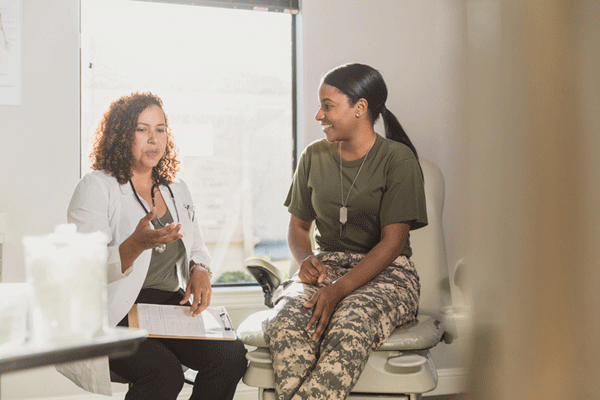At 57 years old, Margo Wickersham was diagnosed with stage 1 bladder cancer. The real estate professional had no known risk factors for the disease and recalled being completely healthy until she spotted a little bit of blood in her urine. After receiving the diagnosis and while seeking treatment, Wickersham learned she actually had a second, different bladder cancer — a rare type called plasmacytoid cancer. As a result, she had to have her bladder removed entirely, an experience she documented in her book, Gratitude in the Storm: When Not Dying Is Enough to Keep Fighting.
While plasmacytoid cancer is uncommon, bladder cancer survivors not only have to watch out for recurrence, but they all too often face the risk of getting additional cancers.
Bladder cancer is the 10th most common type of cancer worldwide, typically affecting people over 55 years old. While it occurs three to four times more often in men, the American Cancer Society estimates that more than 20,000 American women will be diagnosed with the disease in 2024.
What’s more, bladder cancer survivors have the highest rate of getting a second primary cancer. “I’ve seen patients who’ve had multiple urological malignancies, or soon after we treat them and they get better, they get lymphoma,” said Armine Smith, M.D., director of Johns Hopkins Urologic Oncology at Sibley Memorial Hospital.
In one study looking at more than 2 million patients, about 8% of all cancer survivors ended up with a second primary cancer, but 34% of those with bladder cancer were diagnosed with a second primary cancer within 20 years. Of those, 25% were diagnosed with lung cancer, the most common second primary cancer affecting bladder cancer survivors.
What are second primary cancers?
Second primary cancers are completely new cancers that can affect survivors months or years after primary cancers. They are different from metastatic cancers, which start in one organ and spread to other organs. “Even though the cancer has moved on to a different organ, it retains the characteristics of the original cancer cells,” Smith said. “The bladder is lined with urothelial cancer cells, and most bladder cancers are urothelial. If this urothelial cancer leaves the bladder and goes to lymph nodes, liver, lungs, etc., it will retain its urothelial characteristics.”
Second cancers, in contrast, are unrelated to the primary cancer, so they are also unrelated to relapses or recurrence of the primary cancer.
In addition to lung cancer, some of the most common second cancers bladder cancer survivors are at increased risk for include a second (unrelated) bladder cancer, as in Wickersham’s experience, or cancer of the renal pelvis/ureter, kidney, vagina, rectum, pancreas, larynx and esophagus.
“What we don’t know is whether it’s really the bladder cancer putting people at higher risk of second cancer, or if it’s the exposure that led to the bladder cancer that’s also responsible for the second cancer, or if it’s because we as urologists follow these patients for a very long time and pick up these kinds of new diagnoses over time,” Smith said.
Risk factors for developing second primary cancer
While scientists don’t know all the reasons bladder cancer survivors get more secondary cancers, the cause of the primary cancer may put people at higher risk for additional cancers.
“Because bladder cancer is considered to be an exposure-related cancer, there are some things that can affect the individual’s risk for developing other cancers that may be related to that exposure,” Smith explained.
Smoking is the biggest risk factor. Exposure to other carcinogens, including dyes such as those used in the textile, paint, and salon industries (think: hair dye), and chemicals used in the auto industry, also puts people at risk. But some, like Wickersham, can still get bladder cancer and second cancers despite having no known exposures to tobacco or other chemicals.
Additionally, Smith says, genetic mutations such as those in people with Lynch syndrome may put a small number of patients at risk of developing multiple cancers.
“Even though bladder cancer is not a genetic one, there are some genes that put people at risk for developing bladder or urothelial cancer,” Smith said. “And those genes can also be associated with uterine, colorectal and some GI malignancies.”
When it comes to race, white people are about twice as likely as other groups to get bladder cancer, but one study found that Asian Pacific Islander bladder cancer survivors have an increased risk of getting a second cancer.
How to reduce risk of a second cancer
While it’s impossible to eliminate risk, Smith advises following the American Cancer Society screening guidelines in place for lung cancer, GI cancers and gynecological cancers.
“There are preventive measures people can take just to make themselves healthy overall and put them at less risk of developing a variety of malignancies,” she said. “This includes physical activity, eating whole foods, not eating too much red meat — especially charred red meat — limiting alcohol and avoiding tobacco.”
It’s also important to visit healthcare providers regularly after undergoing treatment for bladder cancer and communicate with them about any new symptoms that could be evidence of a second cancer.















